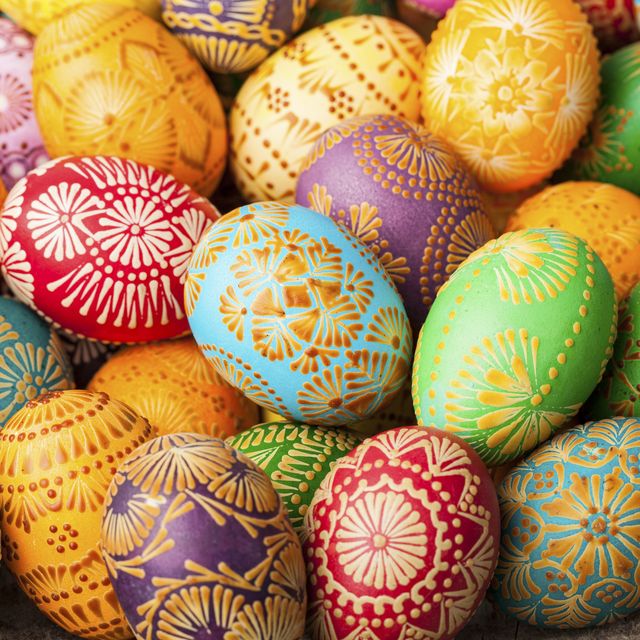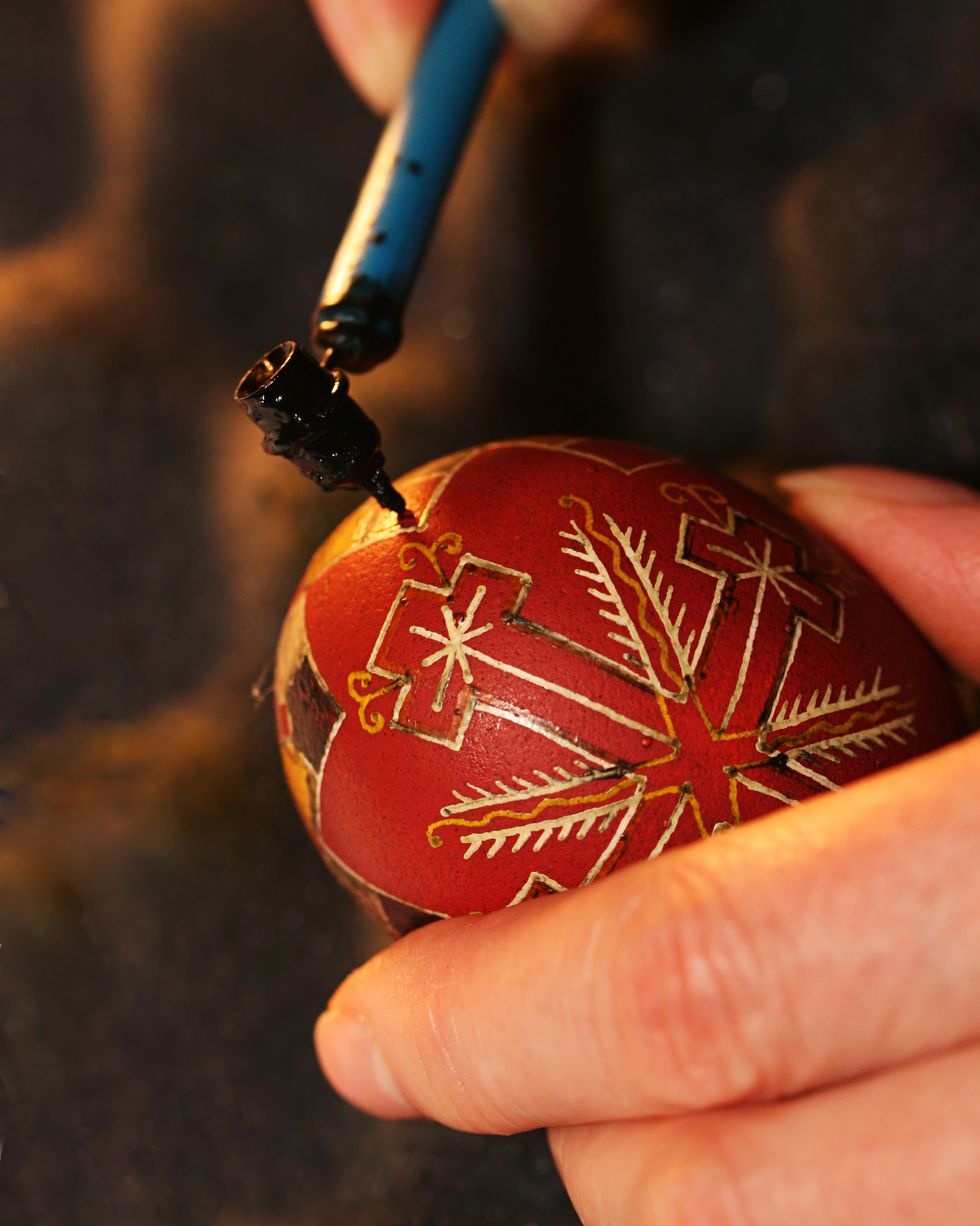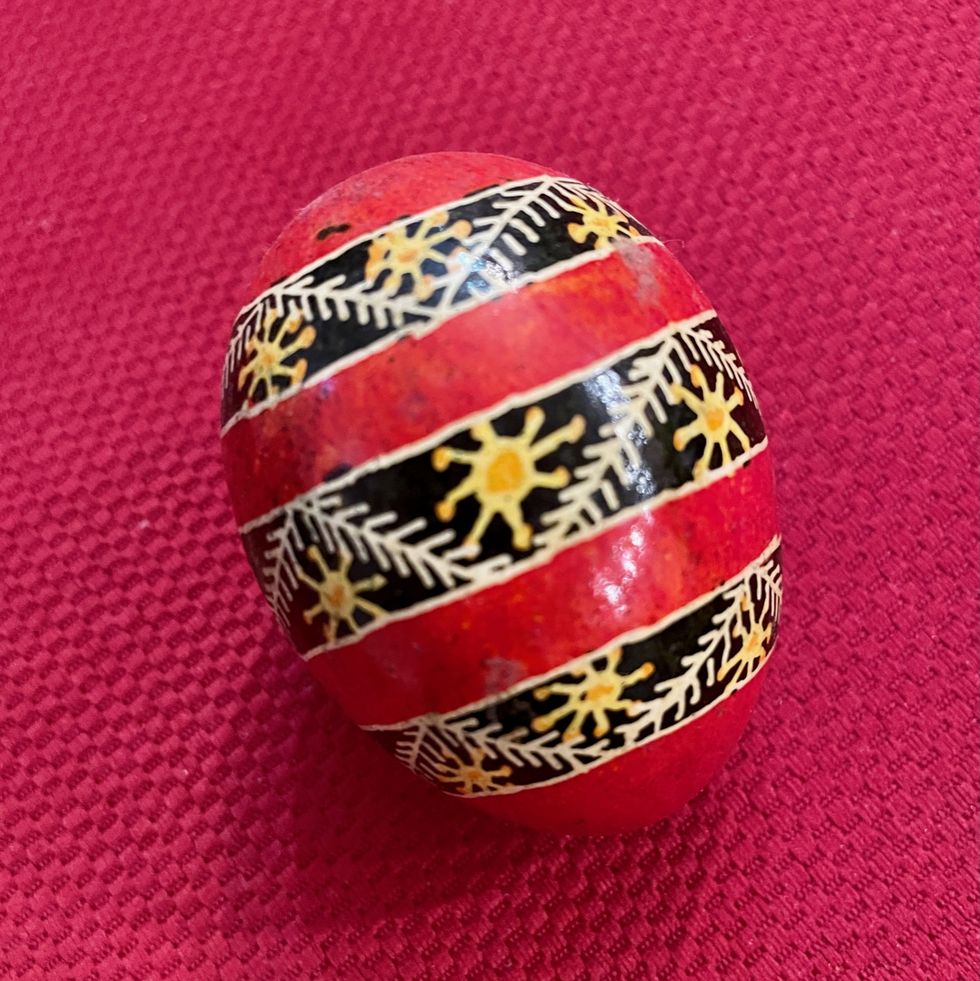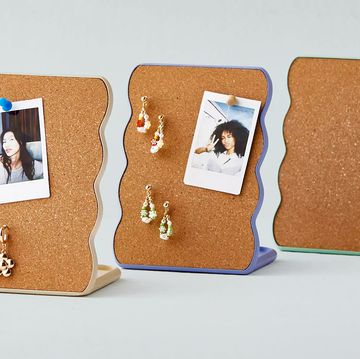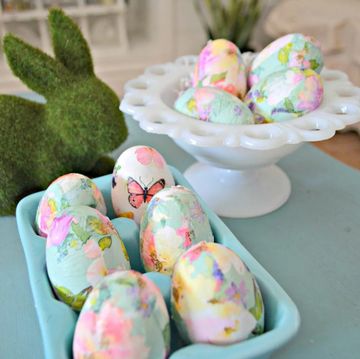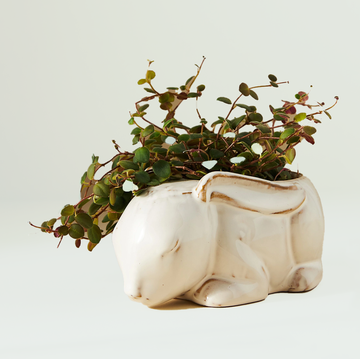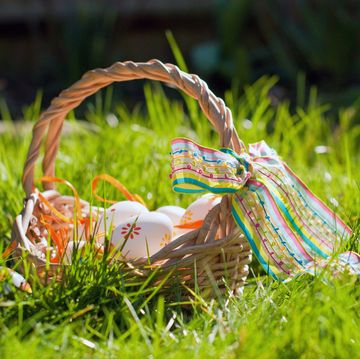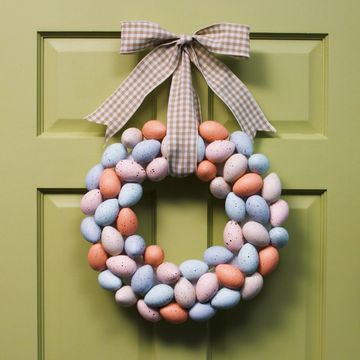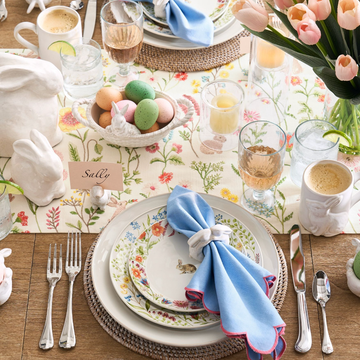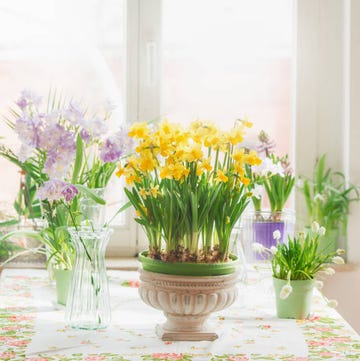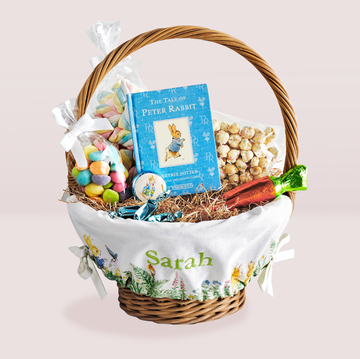Many cultures have their own version of Easter eggs—some in pastel Easter colors or even hand-painted floral designs—but Ukrainian pysanky eggs elevate the tradition to an art form. Named after the Ukrainian word pysaty, which translates as "to write," pysanky eggs have intricate patterns that stop you in your tracks. The craft has been passed down from mother to daughter since well before the 10th century, when Ukraine adopted Christianity and the Easter holiday. Sofika Zielyk, a pysanka artist and art historian who studied the tradition as a Fulbright scholar, started making the hand-dyed eggs when she was six with her mother, who immigrated to New York after World War II. "They could bring good luck, health, wealth, and a bountiful harvest," Zielyk explains. "People believed that by making patterns on the eggshell, they could send tributes and entreaties to the pagan gods."
While the Ukrainian eggs are less of a pagan offering and more of a classical art form these days, they've taken on new meaning as a prayer for peace. Read on to learn more about the history and symbolism of pysanky eggs, as well as how they're made.
What Are Pysanky Eggs?
Pysanky eggs are real, raw, un-hollowed-out eggs that have had symbols written on them in beeswax and then been dipped by hand in richly colored, sometimes natural dyes. According to Zielyk, dye recipes were incredibly secretive and passed down from mother to daughter orally. Pysanky eggs were made in the dead of night as each intention and manifestation imbued in the symbols was highly personal and kept secret.
Only in recent decades have these Ukrainian eggs become known for their artistry. Zielyk refers to these more intricate eggs as diaspora eggs rather than traditional pysanky eggs. Historically, she says, it didn't matter if the lines were straight or the design was symmetrical; it was the intent of the maker while crafting the eggs that determined their significance. There's a legend that says that for as long as people write pysanky, the world will continue to exist, Zielyk says. The original inhabitants of what is now Ukraine used to carry a pysanka egg with them everywhere in hopes of warding off evil.
How Pysanky Eggs Are Made
Pysanka are made using a copper funnel, called a kistka, and a wax-resistant process. Think of the kistka as a heated fountain pen that uses melted beeswax "ink." The beeswax, which turns black when heated, is used to write symbols directly onto the eggshell. The wax acts as like masking tape—anywhere you put it won't get dyed. Today, the maker might trace the design onto the eggshell in pencil, then go over it in beeswax. After finishing the design, the maker dips the egg into a light color of cool dye, hardening the wax. Then more wax is applied and the dye process repeated to add progressively darker colors. At the end, the egg is heated to remove the wax, leaving an intricate white pattern surrounded by different colors.
Pysanky Egg Meaning and Significance
Thousands of years ago, the agrarian people living in the area now known as Ukraine depended on the sun for survival and successful crop-growing seasons, so the eggs were made as offerings for the sun to return after a long winter and sustain them through the summer. Traditionally, the egg yolk represented the sun, so the eggs were used whole, never hollowed out. The intricate symbols on the eggshell were intended as prayers to the gods. Some shifted in meaning as the culture evolved from pagan to Christian—the fish went from a sign of harvest to a symbol of the Christian church, and the equal cross became better known as a symbol of Christ himself than of the sun—while other common motifs like flowers and wheat still stand for prosperity and luck.
Today, thousands of people around the world craft their versions of pysanky eggs each year around Easter. Amid the turmoil in Ukraine, the eggs have become a hope for peace and an artistic prayer to bring the ongoing war to an end. In partnership with the World Federation of Ukrainian Women’s Organizations, Zielyk is curating an installation at the Ukrainian Institute of America in New York called "A Symbol of Hope," which offers a modern take on the Pysanky eggs' original purpose: to protect from evil and usher in a season of light. Anyone who feels inspired can make eggs and deliver them to the institute to be displayed. The installation is ongoing, but when the war is over, the eggs will be delivered to Ukraine as a symbol of peace. Some will be left on display in town halls and placed at sites of rebuilding, and many will be placed in the coffins of children who have died in the war.
FAQ
How Long Do Pysanky Eggs Last?
Pysanky eggs will last indefinitely if you store them carefully and don't break them. The oldest known pysanky eggs still on display date back to the 10th century. Zielyk describes it as the eggs having a birth certificate; historians can even trace eggs back to their original towns.
What Do Ukrainian Easter Eggs Mean?
Traditional Ukrainian eggs are dyed in many colors, each one conveying a specific meaning. These days, many people make pysanky eggs in the colors of the Ukrainian flag, blue and yellow, to show support for peace.
- White: purity, light, birth
- Yellow: sun, stars, moon, harvest, warmth, youth, happiness
- Orange: endurance, strength, ambition
- Red: happiness, hope, passion
Are Ukrainian Easter Eggs Hollow?
No. The yolk, in Ukrainian folklore, represents the sun. Because the eggs were originally intended to honor the return of spring, leaving them intact is essential to the tradition.
Follow House Beautiful on Instagram and TikTok.
Kate McGregor is House Beautiful's SEO Editor, writing in-depth home renovation cost guides, design inspiration stories while overseeing gardening content through routine plant care guides. With over five years in the shelter industry creating content for brands like Domino, Real Simple, and Architectural Digest’s Clever, Kate has developed a passion for uncovering the personal stories that often lie behind the inspiration for people’s spaces. She previously worked as the assistant market editor at ELLE Decor, where she identified top products and brands in the industry as well as interviewed emerging designers about their thoughts on the latest interior design trends. Kate holds a bachelor’s degree from Belmont University. When not researching the specificities of begonia plant care, you can find Kate scouring vintage markets for the ideal wrought-iron chair, knitting yet another cardigan, or reading historical nonfiction.
